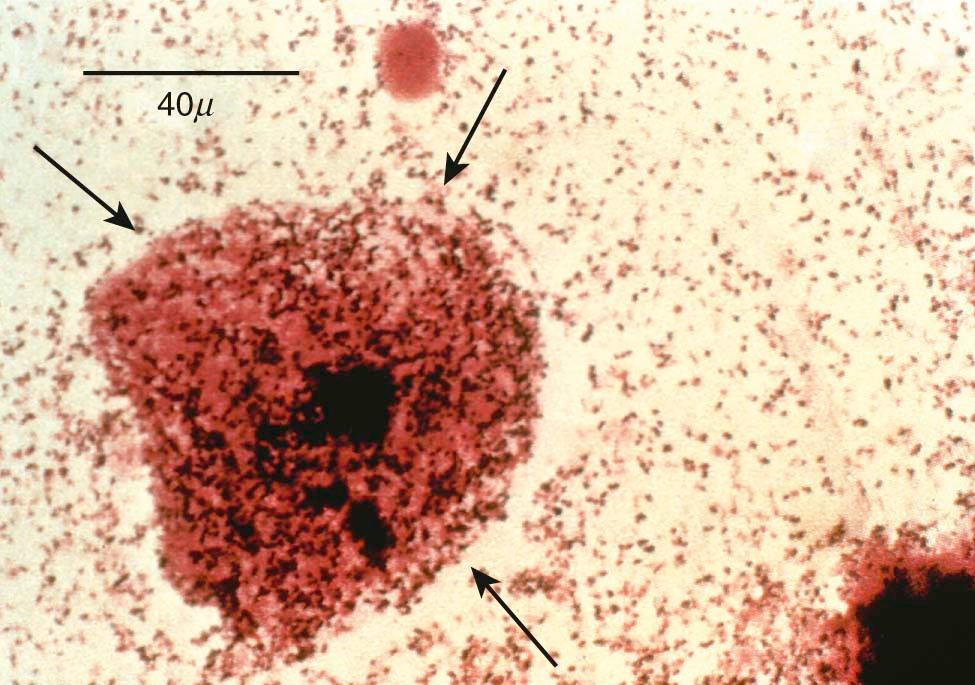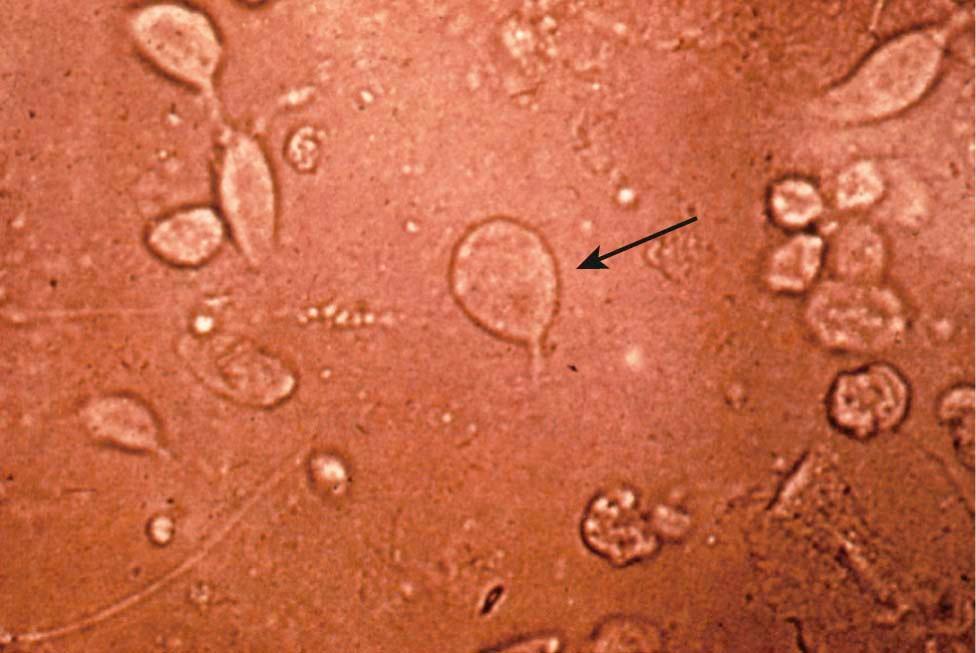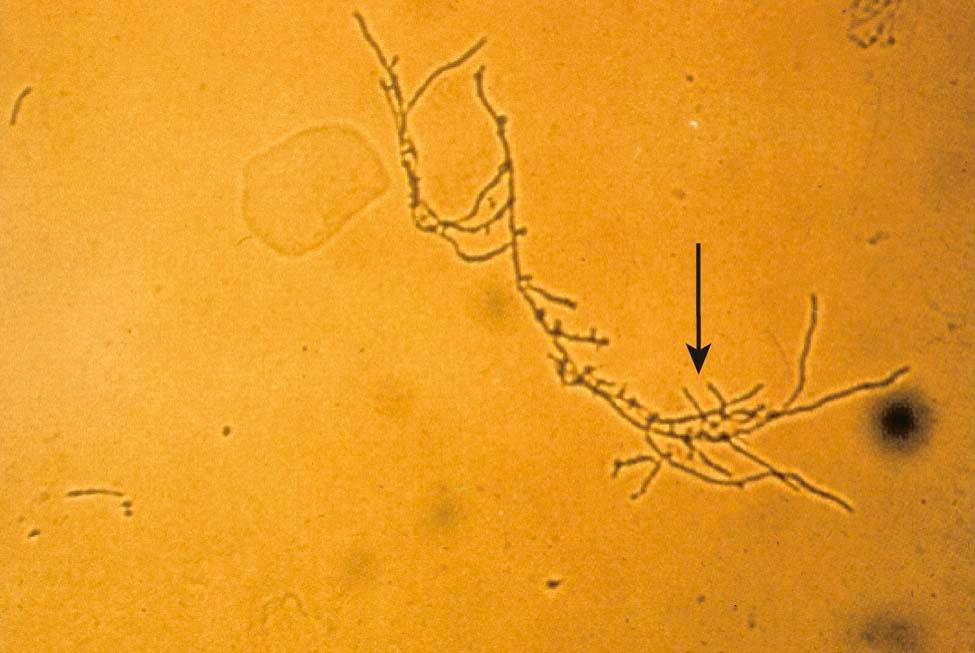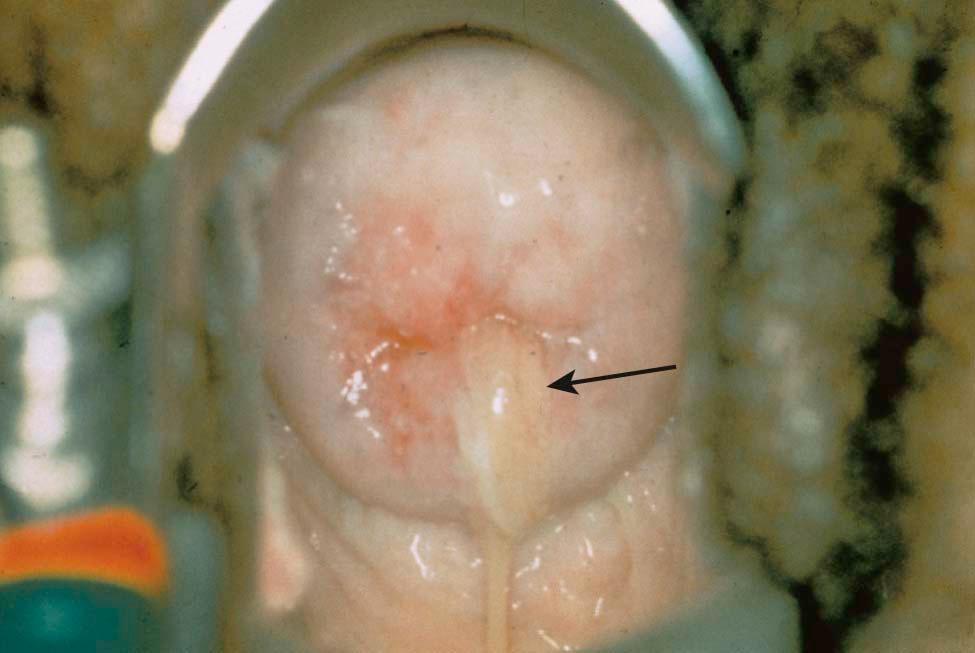Physical Address
304 North Cardinal St.
Dorchester Center, MA 02124
Bacterial vaginosis (BV) is caused by an alteration of normal vaginal bacterial flora that results in the loss of hydrogen peroxide-producing lactobacilli, thereby allowing an overgrowth of predominantly anaerobic bacteria. Women with BV are at increased risk for pelvic inflammatory disease (PID) and postabortal and postoperative infection. Trichomonas vaginitis, caused by a flagellated parasite, is another sexually transmitted infection (STI) that often accompanies BV. Both are treated with metronidazole.
PID is caused by microorganisms that colonize the endocervix and ascend into the uterine lining and fallopian tubes. Sexually transmitted Neisseria gonorrhoeae and Chlamydia trachomatis are the two most common causes of PID. Traditionally, the diagnosis of PID has been based on the triad of symptoms and signs: pelvic pain, cervical and adnexal tenderness, and fever. Many women have more subtle and mild symptoms that may delay the diagnosis. Treatment of PID is with broad-spectrum antibiotics on an outpatient basis. Any sexual partner(s) should be evaluated and treated. A possible end-stage development of PID is tubo-ovarian abscess(es) that requires hospitalization.
Genital ulcer disease is usually caused by herpes simplex virus (HSV) or syphilis, with chancroid, lymphogranuloma venereum (LGV), and granuloma inguinale as rare causes. Genital warts, caused by the sexually transmitted human papillomavirus (HPV), are common and treated by removal/destruction. Infection with HPV types 6, 11, 16, and 18 can be prevented by vaccination.
Cystitis and pyelonephritis are infections of the urinary tract, with Escherichia coli the causative bacteria 80% of the time. Pyelonephritis during pregnancy is associated with premature labor and delivery when not treated in a timely manner.
Infections during pregnancy include chorioamnionitis (also called intraamniotic infection syndrome or IAIS), postpartum endometritis, and postabortal sepsis. IAIS is an ascending infection caused by highly virulent organisms such as Group-B streptococcus. IAIS can interfere with labor and should be treated before delivery. Hepatitis, human immunodeficiency virus (HIV), and perinatal infections can complicate the management of pregnancy for the fetus and mother.
Infectious diseases of the reproductive and urinary tracts are interesting and challenging disorders in gynecology. Some are difficult to treat, with frequent recurrences. Some occur during pregnancy and have an impact on its course and outcome.
Infections of the vulva, vagina, and cervix (lower reproductive tract) and the uterine corpus, fallopian tubes, and ovaries (upper reproductive tract) are the most common gynecologic problems. Many are sexually transmitted infections (STIs) that require screening, early recognition, and treatment. The diagnosis and management of common reproductive and urinary tract infections in both nonpregnant and pregnant women are discussed in this chapter. Also covered are the important perinatal infections that may impact the mother and/or her fetus.
Normal vaginal secretions are composed of vulvar secretions from sebaceous, sweat, Bartholin, and Skene glands; transudate from the vaginal wall; exfoliated vaginal and cervical cells; cervical mucus; endometrial and oviductal fluids; and microorganisms and their metabolic products. The normal vaginal flora is mostly aerobic, with an average of six different species of bacteria, the most common of which is the hydrogen peroxide–producing lactobacillus. The microbiology of the vagina is determined by factors that affect the ability of bacteria to survive. These factors include vaginal pH and the availability of glucose for bacterial metabolism. The pH of the normal vagina is lower than 4.5, which is maintained by the production of lactic acid. Estrogen-stimulated vaginal epithelial cells are rich in glycogen. Vaginal epithelial cells break down glycogen to monosaccharides, which can be converted by the cells themselves, and by lactobacilli to lactic acid. Normal vaginal secretions are floccular in consistency, white in color, and usually located in the dependent portion of the vagina (posterior fornix).
Vaginal secretions can be analyzed by a wet-mount preparation. A sample of vaginal secretions is suspended in 0.5 mL of normal saline in a tube, transferred to a slide, covered with a slip, and assessed by microscopy. Microscopy of normal vaginal secretions reveals many superficial epithelial cells, few white blood cells (less than 1 per epithelial cell), and few, if any, clue cells. Clue cells are superficial vaginal epithelial cells with adherent bacteria, usually Gardnerella vaginalis, which obliterate the crisp cell border when visualized microscopically ( Figure 22-1 ). Potassium hydroxide (KOH) 10% may be added to the slide or a separate preparation can be made to examine the secretions for evidence of fungal elements. Gram stain reveals normal superficial epithelial cells and a predominance of gram-positive rods (lactobacilli).

Bacterial vaginosis (BV) is an alteration of normal vaginal bacterial flora that results in the loss of hydrogen peroxide–producing lactobacilli and an overgrowth of predominantly anaerobic bacteria. Anaerobic bacteria can be found in less than 1% of the flora of normal women. In women with BV, the concentration of anaerobes, and G. vaginalis and Mycoplasma hominis, is 100 to 1000 times higher than in normal women. Lactobacilli are usually absent. Women with BV are at increased risk for pelvic inflammatory disease (PID), postabortal PID, postoperative cuff infections after hysterectomy, and abnormal cervical cytology. Pregnant women with BV are at risk for premature rupture of the membranes, preterm labor and delivery, chorioamnionitis, and postcesarean endometritis.
Office-based testing is required to diagnose BV. Figure 22-1 reveals a microscopy of a clue cell. The addition of potassium hydroxide to the vaginal secretions (the “whiff” test) releases a fishy, amine-like odor. Clinicians who are unable to perform microscopy can use alternative diagnostic tests such as a pH and amines test card, detection of G. vaginalis ribosomal RNA, or Gram stain. Culture of G. vaginalis is not recommended as a diagnostic tool because of its lack of specificity.
Ideally, treatment of BV should inhibit anaerobes but not vaginal lactobacilli. Metronidazole, an antibiotic with excellent activity against anaerobes but poor activity against lactobacilli, is the drug of choice for the treatment of BV. Clindamycin is an alternative agent. Table 22-1 illustrates the 2015 Centers for Disease Control and Prevention (CDC) guidelines for the treatment of bacterial vaginosis. Table 22-2 lists alternative regimens for the treatment of bacterial vaginosis. Many clinicians prefer intravaginal treatment to avoid systemic side effects such as mild to moderate gastrointestinal upset and an unpleasant taste. Treatment of the male sexual partner does not improve therapeutic response and therefore is not recommended.
| Metronidazole 500 mg orally twice a day for 7 days * |
| OR |
| Metronidazole gel 0.75%, one full applicator (5 g) intravaginally, once a day for 5 days |
| OR |
| Clindamycin cream 2%, one full applicator (5 g) intravaginally at bedtime for 7 days † |
* Consuming alcohol should be avoided during treatment and for 24 hours thereafter.
† Clindamycin cream is oil-based and might weaken latex condoms and diaphragms for 5 days after use (refer to clindamycin product labeling for additional information).
| Tinidazole 2 gm orally once daily for 2 days |
| OR |
| Tinidazole 1 g orally once daily for 5 days |
| OR |
| Clindamycin 300 mg orally twice daily for 7 days |
| OR |
| Clindamycin ovules 100 mg intravaginally once at bedtime for 3 days |
Trichomonas vaginitis is caused by the sexually transmitted, flagellated parasite, Trichomonas vaginalis. The transmission rate is high; 70% of men contract the disease after a single exposure to an infected woman, which suggests that the rate of male-to-female transmission is even higher. The parasite, which exists only in trophozoite form, is an anaerobe that has the ability to generate hydrogen to combine with oxygen to create an anaerobic environment. Bacterial vaginosis can be diagnosed in as many as 60% of patients with trichomonas vaginitis.
Trichomonas vaginitis is associated with a profuse, purulent, malodorous vaginal discharge that may be accompanied by vulvar pruritus. In patients with high concentrations of organisms, a patchy vaginal erythema and colpitis macularis (“strawberry” cervix) may be observed. Microscopy of the secretions may reveal motile trichomonads ( Figure 22-2 ) and increased numbers of leukocytes, but the sensitivity of this test is poor (50%). For this reason, nucleic acid amplification testing is recommended when trichomoniasis is suspected but not confirmed by microscopy.

Because of the sexually transmitted nature of trichomonas vaginitis, women with this infection should be tested for other STIs, particularly Neisseria gonorrhoeae and Chlamydia trachomatis. Serologic testing for syphilis and human immunodeficiency virus (HIV) infection should be considered.
Metronidazole is the drug of choice for treatment of vaginal trichomoniasis. Both a single-dose (2 g orally) and a multidose (500 mg twice daily for 7 days) regimen are highly effective and have cure rates of about 95%. The sexual partner should be treated.
Women who do not respond to initial therapy should be treated again with metronidazole, 500 mg, twice daily for 7 days. If repeated treatment is not effective, the patient should be treated with a single 2-g dose of metronidazole once daily for 5 days or tinidazole 2 g, in a single dose for 5 days. Patients who do not respond to repeated treatment with metronidazole or tinidazole and for whom the possibility of reinfection is excluded should be referred for expert consultation. In these uncommon refractory cases, an important part of management is to obtain cultures of the parasite to determine its susceptibility to metronidazole and tinidazole.
An estimated 75% of women will experience at least one episode of vulvovaginal candidiasis (VVC) during their lifetimes. Nearly 45% of women will experience two or more episodes. A few are plagued with a chronic, recurrent infection. Candida albicans is responsible for 85-90% of vaginal yeast infections. The extensive areas of pruritus and inflammation, often associated with minimal invasion of the lower genital tract epithelial cells, suggest that an extracellular toxin or enzyme may play a role in the pathogenesis of this disease. A hypersensitivity phenomenon may be responsible for the irritative symptoms associated with VVC, especially for patients with chronic, recurrent disease.
Factors that predispose women to the development of symptomatic VVC include antibiotic use, pregnancy, and diabetes. Pregnancy and diabetes are associated with a qualitative decrease in cell-mediated immunity, leading to a higher incidence of candidiasis.
The symptoms of VVC consist of vulvar pruritus associated with a discharge that can vary from watery to homogeneously thick. Vaginal soreness, dyspareunia, vulvar burning, and irritation may be present. Examination may reveal erythema and edema of the labia and vulvar skin. Discrete pustulopapular peripheral lesions may be present. The vagina may be erythematous with an adherent, whitish discharge. The cervix appears normal. Fungal elements, either budding yeast forms or mycelia, appear in as many as 80% of cases ( Figure 22-3 ).

The treatment of VVC involves the use of topically applied azole drugs, which are more effective than nystatin. Table 22-3 illustrates the 2010 CDC guidelines for the treatment of VVC. Treatment with azoles results in relief of symptoms and negative cultures in 80-90% of patients. Symptoms usually resolve in 2 to 3 days. Short-course regimens up to 3 days are recommended. The oral antifungal agent, fluconazole, used in a single 150-mg dose, is also recommended for the treatment of VVC. It has equal efficacy when compared with topical azoles in the treatment of mild to moderate VVC. Symptoms will persist for 2 to 3 days. Adjunctive treatment with a weak topical steroid, such as 1% hydrocortisone cream, may be helpful in relieving some of the external irritation.
| Over-the-Counter Intravaginal Agents |
| Clotrimazole 1% cream 5 g intravaginally for 7-14 days |
| OR |
| Clotrimazole 2% cream 5 g intravaginally for 3 days |
| OR |
| Miconazole 2% cream 5 g intravaginally for 7 days |
| OR |
| Miconazole 4% cream 5 g intravaginally for 3 days |
| OR |
| Miconazole 100 mg vaginal suppository, one suppository for 7 days |
| OR |
| Miconazole 200 mg vaginal suppository, one suppository for 3 days |
| OR |
| Miconazole 1200 mg vaginal suppository, one suppository for 1 day |
| OR |
| Tioconazole 6.5% ointment 5 g intravaginally in a single application |
| Prescription Intravaginal Agents |
| Butoconazole 2% cream (single dose bioadhesive product), 5 g intravaginally for 1 day |
| OR |
| Terconazole 0.4% cream 5 g intravaginally for 7 days |
| OR |
| Terconazole 0.8% cream 5 g intravaginally for 3 days |
| OR |
| Terconazole 80 mg vaginal suppository, one suppository for 3 days |
| Oral Agent |
| Fluconazole 150 mg oral tablet, one tablet in single dose |
A small number of women develop recurrent VVC (RVVC), defined as four or more episodes in a year. The treatment of patients with RVVC consists of inducing a remission of chronic symptoms with fluconazole (150 mg every 3 days for three doses), then maintaining a suppressive dose of this agent (fluconazole, 150 mg weekly) for 6 months. On this regimen, 90% of women with RVVC will remain in remission. After suppressive therapy, approximately half will remain asymptomatic. Recurrence will occur in the other half and should prompt reinstitution of suppressive therapy.
Estrogen plays an important role in the maintenance of normal vaginal ecology. Hypoestrogenic women having undergone natural or surgical menopause may have dyspareunia and postcoital bleeding resulting from atrophy of the vaginal and vulvar epithelium. Examination reveals atrophy of the external genitalia, along with a loss of the vaginal rugae. The vaginal epithelium may be somewhat friable in areas. Microscopy of the vaginal secretions shows a predominance of parabasal epithelial cells and an increased number of leukocytes.
Atrophic vaginitis is treated with vaginal estrogen cream. Maintenance estrogen therapy, either topical or systemic, should be considered to prevent recurrence of this disorder.
Desquamative inflammatory vaginitis (DIV) is a fairly rare clinical syndrome characterized by diffuse exudative vaginitis, epithelial cell exfoliation, and a profuse purulent vaginal discharge. DIV presents as vaginal erythema. There may also be an associated vulvar erythema, vulvovaginal ecchymotic spots, and colpitis macularis (“strawberry cervix”). DIV can resemble atrophic vaginitis, but can also occur in women with normal estrogen levels. By the time women are diagnosed, their symptoms have usually been present for years, and they have typically been treated repeatedly for a “vaginal infection” without any long-term improvement.
Initial therapy should be with 2% clindamycin cream, one applicator full (5 g) intravaginally daily for 7 days. If this is not effective, intravaginal 10% hydrocortisone daily for 14 days may be tried.
N. gonorrhoeae and C. trachomatis are associated with mucopurulent endocervicitis 50% of the time. Other etiologies include M. genitalium, bacterial vaginosis, and birth control pills.
The diagnosis of cervicitis is based on the finding of a purulent endocervical discharge, generally yellow or green in color, and referred to as “mucopus” (see Figure 22-4 ). In addition, the zone of ectopy (glandular epithelium) is friable or easily induced to bleed. Touching the ectropion with a cotton swab or spatula can assess this characteristic sign. Tests for gonorrhea and chlamydia, preferably using nucleic acid amplification tests, should be performed. The microbial etiology of endocervicitis is unknown in about 50% of cases in which neither gonococci nor chlamydia is detected.

Become a Clinical Tree membership for Full access and enjoy Unlimited articles
If you are a member. Log in here